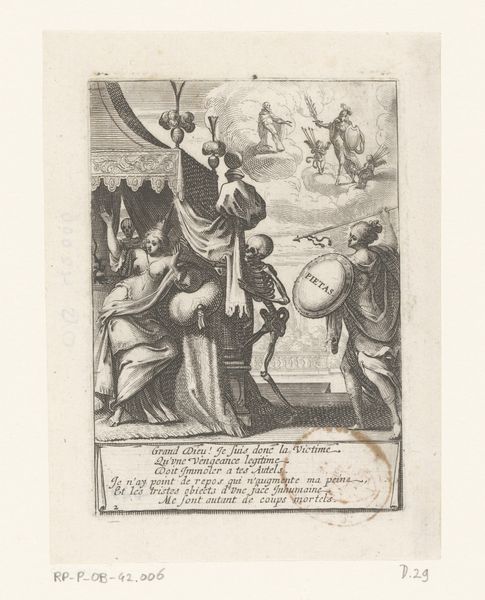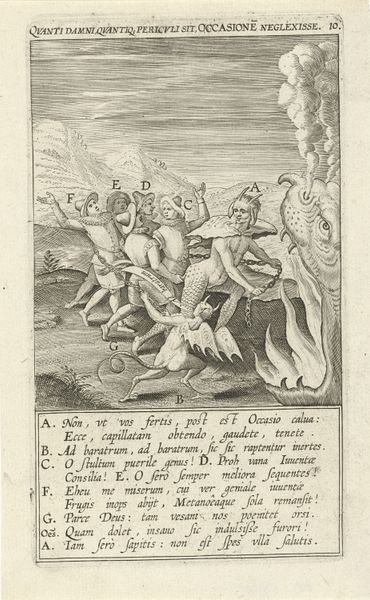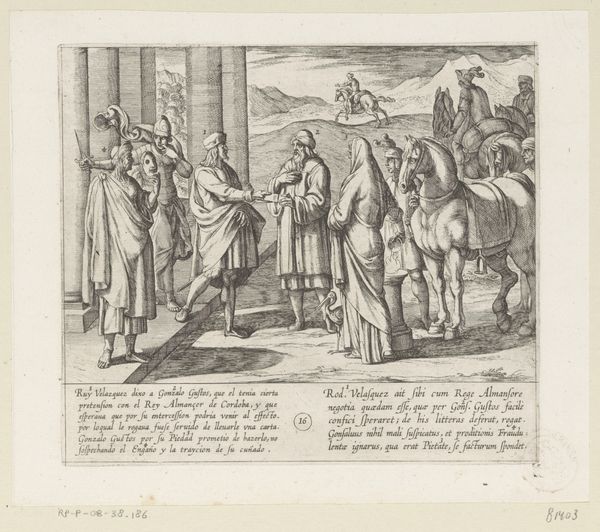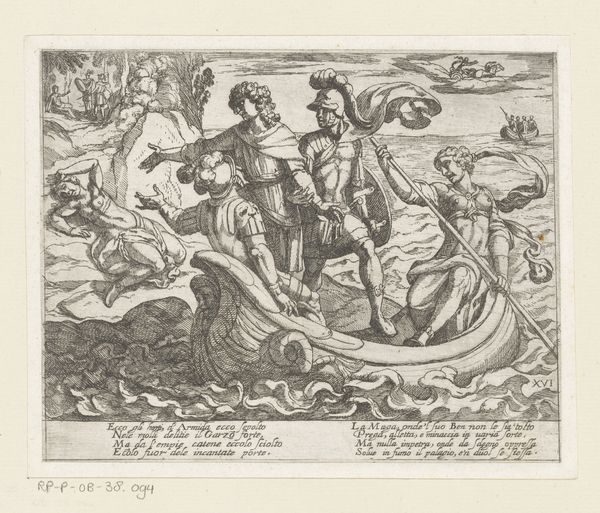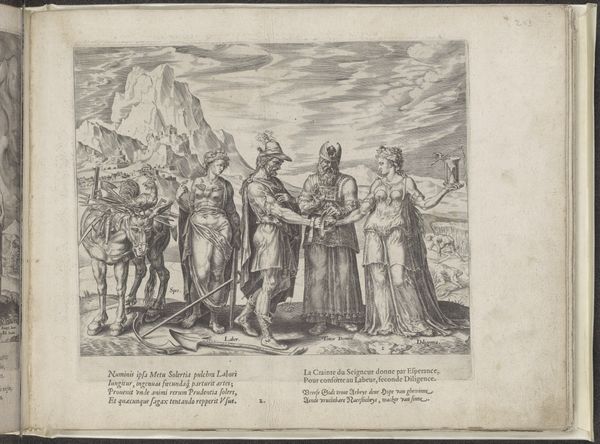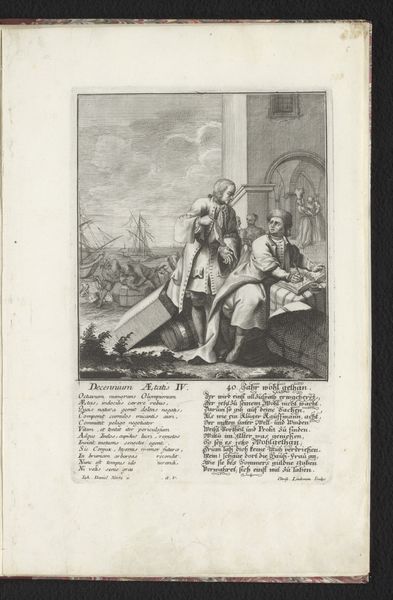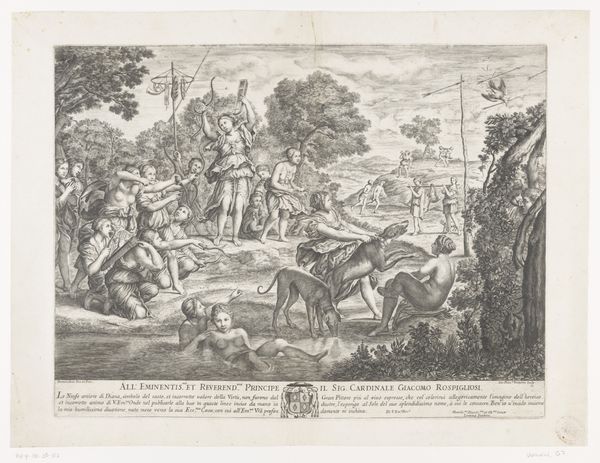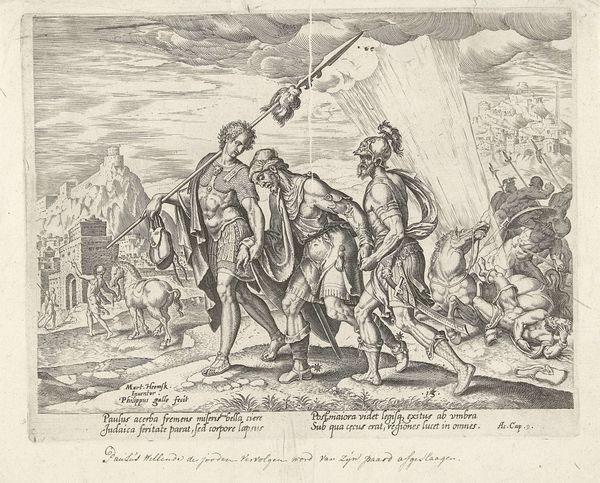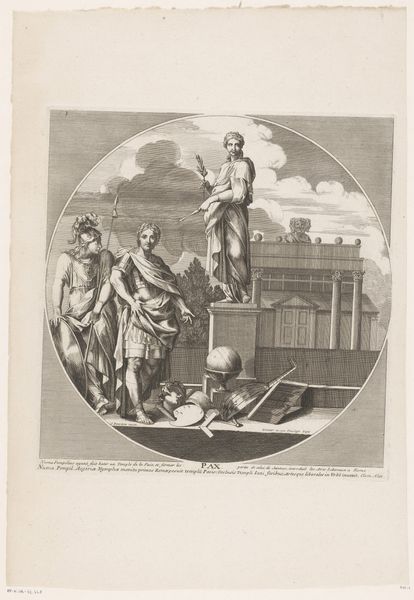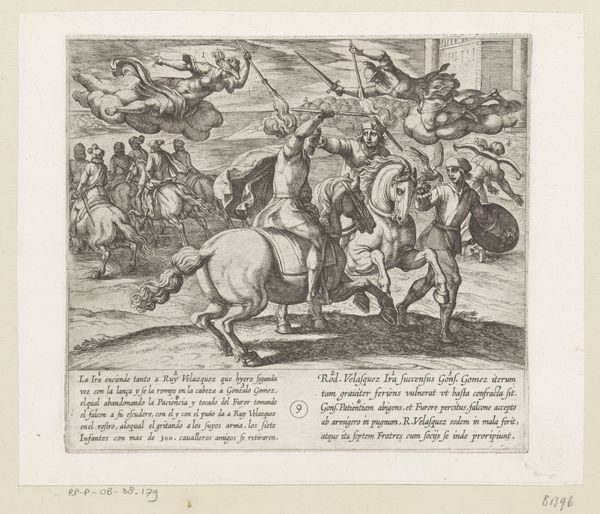
print, engraving
# print
#
old engraving style
#
landscape
#
figuration
#
11_renaissance
#
history-painting
#
italian-renaissance
#
engraving
Dimensions: height 197 mm, width 234 mm
Copyright: Rijks Museum: Open Domain
Curator: The prevailing atmosphere is undeniably melancholic. A subtle anxiety permeates the scene, even given its relatively small size and clear lines. Editor: Indeed. We’re looking at a print, "Psyche in de veerboot van Charon" or “Psyche in Charon’s Ferry”, created circa 1530 to 1560. The Master of the Die is credited with this Italian Renaissance engraving, now held in the Rijksmuseum collection. Curator: That title really sets the stage. Charon, the ferryman of Hades, guiding souls across the river Styx. So, the somber mood stems directly from the subject itself. What draws me in is the visual representation of Psyche – her demeanor so demure, almost ethereal, in the face of this liminal passage. Editor: The history painting genre was clearly important to this artist, placing this scene within a familiar context for audiences. Notice how the text framing the image interacts with the visuals, expanding on its meaning in poetic terms. How do you interpret the other figures here? Curator: I'm struck by the figure kneeling, pointing upwards. He could symbolize reflection, the need to reckon with earthly choices before embarking on the final journey. Then Charon, steadfastly rowing, seems a universal symbol of fate itself, unyielding and dutiful in carrying out a cosmic task. Editor: These visual devices, seen within a wide array of contemporaneous imagery, effectively delivered nuanced messages, conveying mortality and perhaps redemption to the contemporary viewer. But the politics of imagery always involves power. How do the symbolic functions within this piece help structure a society's relationship to power, death, and meaning? Curator: I think the piece reminds people that mortality is a common experience. However, depending on our lived life and adherence to social norms, our entry to the afterlife may differ. Therefore, a work like this isn't just for aesthetic consumption. It also acts as a cultural lesson on death and behavior. Editor: A fascinating point! I agree that artworks like this play a crucial role in articulating collective values and negotiating life’s big questions. They are, in some sense, documents that shape and are shaped by cultural perspectives. Curator: Well, it has definitely made me consider the deeper psychological need for narratives around death. Editor: Absolutely. Art provides a canvas for societies to work through fundamental, shared human experiences, even in times as different from our own as the Renaissance.
Comments
No comments
Be the first to comment and join the conversation on the ultimate creative platform.
